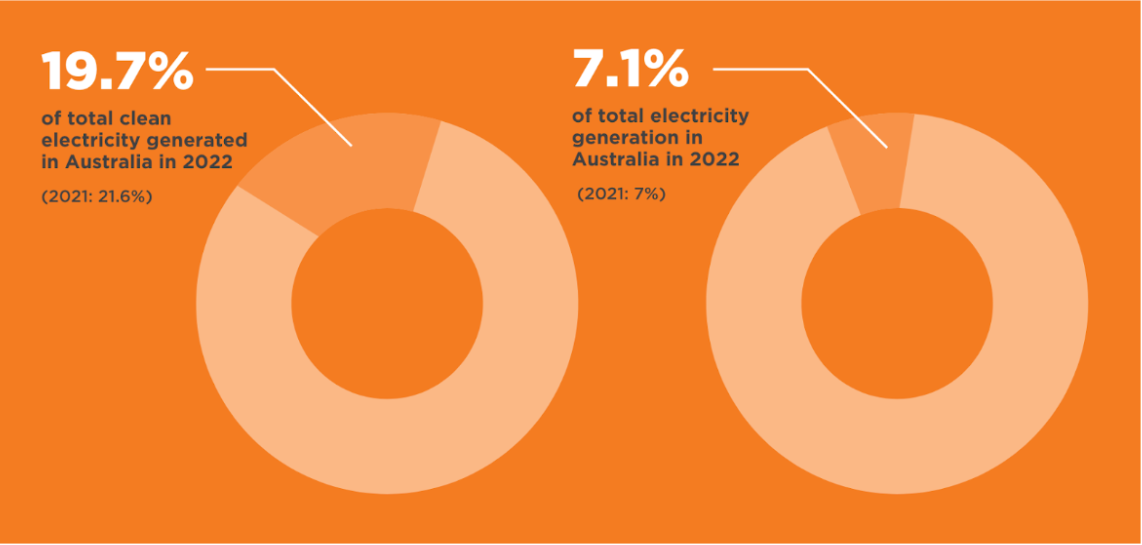KEY POINTS
- Hydroelectricity, hydro energy or hydropower, is a popular form of renewable energy that uses flowing water to generate electricity.
- Hydroelectric generation requires a downward flow of water.
- The most common way of generating hydroelectricity is through the use of a man-made dam positioned in a river or lake that contains a gate or valve that controls how much water flows in or out of the system.
On this page:
- What is hydroelectricity?
- How does hydroelectricity work?
- What is hydro energy used for?
- How much hydroelectricity is used in Australia?
- Can I sign up to hydro energy for my home?
- What are the advantages of hydroelectricity?
- Are there any disadvantages of hydroelectricity?
- Is hydroelectricity the best renewable energy option for Australia?
What is hydroelectricity?
Hydroelectricity, hydro energy or hydropower, is a popular form of renewable energy that uses flowing water to generate electricity. It’s a well-developed renewable energy technology that is capable of producing massive amounts of power — just as long as there is plenty of rainfall.
How does hydroelectricity work?
Hydroelectric generation requires a downward flow of water. The most common way of generating hydroelectricity is through the use of a man-made dam positioned in a river or lake that contains a gate or valve that controls how much water flows in or out of the system. As the water flows down, it is used to push the blades of connected turbines, which in turn generates electricity. Most hydropower stations are fitted with dozens of these turbine generators, capable of producing enough electricity to power thousands of homes and businesses.
There are three different types of hydroelectric energy plants: an impoundment facility, diversion facility and pumped-storage facility. An impoundment facility is the most common kind of plant, which uses a dam. A diversion facility is similar to an impoundment facility, however instead of using a dam, it relies on a series of canals to push flowing water towards a turbine generator.
Pumped-storage facilities use a reverse effect to generate electricity, collecting energy from the sun, wind, or nuclear plants to store for later use. Through this method, water is pumped uphill until it reaches a smaller reservation pool at a higher elevation. This water is stored here until electricity is needed to be generated, in which case it is released to the bottom of the hill, where it then powers the turbines within the generators.
What is hydro energy used for?
Hydro energy is primarily used to power homes and businesses by providing a consistent renewable energy source to the grid. In addition to providing clean energy, the infrastructure used to generate hydropower can also be used for flooding control and irrigation support.
How much hydroelectricity is used in Australia?
According to the Clean Energy Council, hydroelectricity accounted for 19.7 per cent of Australia’s total clean energy supply in 2022, making it the third-largest renewable energy supplier in the country, behind wind energy and small-scale solar. Hydropower made up 7.1 per cent of Australia’s overall electricity generation in 2022, equating to that of powering 3,598,082 homes in a year..

Image Source: Clean Energy Council, Clean Energy Australia 2023 report
While most of Australia’s hydroelectricity is generated by Hydro Tasmania’s network of power plants and New South Wales’ Snowy Mountains Hydro Scheme, there are more than 120 working hydropower stations in the country.
Can I sign up to hydro energy for my home?
If you like what you’ve heard about hydro so far then we have some good news and bad news for you. The bad news is that it’s virtually impossible to build and install your own private hydroelectric plant to power your home. Unlike solar energy, hydroelectricity requires substantial land area. So, while private hydro energy is a pipedream for now, the good news is that you can often ‘buy-in’ to hydroelectricity with your energy company.
A number of electricity providers offer to purchase power from green energy sources on a customer’s behalf. This does not mean that a household is exclusively powered with green energy, rather, the retailer pumps an agreed amount back into the grid. This is done through an initiative called GreenPower. With GreenPower, your retailer can agree to offset some or all of your energy usage by purchasing electricity from accredited renewable generators — like hydropower stations. Keep in mind, however, that retailers charge you extra for incorporating GreenPower into your plan.
You might also be interested in:
What are the advantages of hydroelectricity?
There are quite a few advantages to using hydropower for electricity generation:
- Cleaner energy source: As a renewable energy source, hydroelectricity can help to reduce carbon emissions in the energy sector
- Flexible energy source: Hydropower stations are quite versatile and can easily interchange between higher and lower outputs of power, making them great for handling the demands of the grid, particularly in the event of a power outage or blackout
- Supports systems beyond the grid: In addition to generating electricity, hydro plants can also aid with flood control and irrigation support. Plus, larger reservoirs can also be used for recreational opportunities in the community, such as swimming, fishing and boating
Are there any disadvantages of hydroelectricity?
Despite the many great benefits involved with hydroelectricity, there are also some disadvantages to the clean energy source:
- Relies on weather: With hydro energy relying heavily on the availability of water in order to work, it may not be a viable option in drought-stricken areas
- Expensive to build and requires large areas: Hydropower stations carry expensive upfront costs to build. They also require significant space to be constructed and managed
- Impacts ecosystem and wetlands: Some of the bigger reservoirs may interfere with surrounding wetland ecosystems, causing disruptions through the use of turbine gates or draining the water
Compare GreenPower energy deals
Here are some of the cheapest published deals from the retailers on our database that have a GreenPower option and include a link to the retailer’s website for further details. These are products from referral partners†. These costs are based on the Ausgrid network in Sydney but prices may vary depending on your circumstances. This comparison assumes general energy usage of 3900kWh/year for a residential customer on a single rate tariff. Please use our comparison tool for a specific comparison in your area. Our database may not cover all deals in your area. As always, check all details of any plan directly with the retailer before making a purchase decision. The annual cost estimates for the plans below may not include the cost of GreenPower. The extra cost of GreenPower may vary between retailers.
Here are some of the cheapest published deals from the retailers on our database that have a GreenPower option and include a link to the retailer’s website for further details. These are products from referral partners†. These costs are based on the Citipower network in Melbourne but prices may vary depending on your circumstances. This comparison assumes general energy usage of 4000kWh/year for a residential customer on a single rate tariff. Please use our comparison tool for a specific comparison in your area. Our database may not cover all deals in your area. As always, check all details of any plan directly with the retailer before making a purchase decision. The annual cost estimates for the plans below may not include the cost of GreenPower. The extra cost of GreenPower may vary between retailers.
Here are some of the cheapest published deals from the retailers on our database that have a GreenPower option and include a link to the retailer’s website for further details. These are products from referral partners†. These costs are based on the Energex network in Brisbane but prices may vary depending on your circumstances. This comparison assumes general energy usage of 4600kWh/year for a residential customer on a single rate tariff. Please use our comparison tool for a specific comparison in your area. Our database may not cover all deals in your area. As always, check all details of any plan directly with the retailer before making a purchase decision. The annual cost estimates for the plans below may not include the cost of GreenPower. The extra cost of GreenPower may vary between retailers.
Here are some of the cheapest published deals from the retailers on our database that have a GreenPower option and include a link to the retailer’s website for further details. These are products from referral partners†. These costs are based on the SA Power network in Adelaide but prices may vary depending on your circumstances. This comparison assumes general energy usage of 4000kWh/year for a residential customer on a single rate tariff. Please use our comparison tool for a specific comparison in your area. Our database may not cover all deals in your area. As always, check all details of any plan directly with the retailer before making a purchase decision. The annual cost estimates for the plans below may not include the cost of GreenPower. The extra cost of GreenPower may vary between retailers.
Is hydroelectricity the best renewable energy option for Australia?
Hydropower is an old and well-developed renewable energy technology, used in many forms all around the world. But despite the many benefits of hydroelectricity, constructing the required stations is a significant undertaking due to high upfront costs and space demands. That being said, Hydro Tasmania highlights pumped hydro as key to a reliable energy future, bolstering the case for expanding Tasmania’s hydropower.
If you’re keen to start implementing more renewable energy sources into your electricity usage, be sure to check out a GreenPower or carbon neutral energy plan. Or better yet, install solar panels on your roof. Not only will you be able to generate your own, cleaner energy, but you may earn yourself a few dollars through your solar feed-in tariff. See which solar retailers Aussies rate highly in our annual customer satisfaction rating below.
Original reporting by Simon Downes
Image Source: Evgeny_V/Shutterstock.com



Share this article